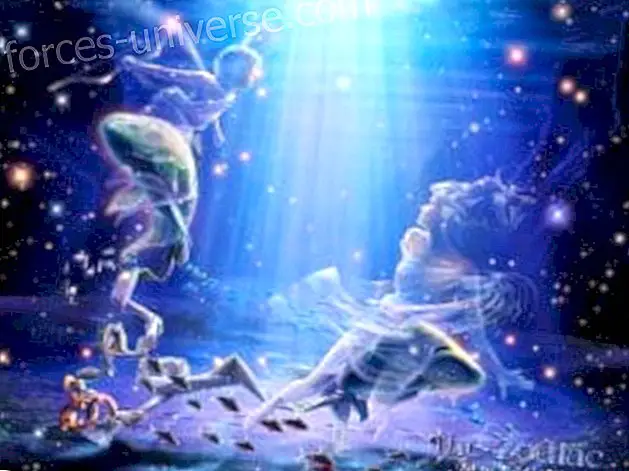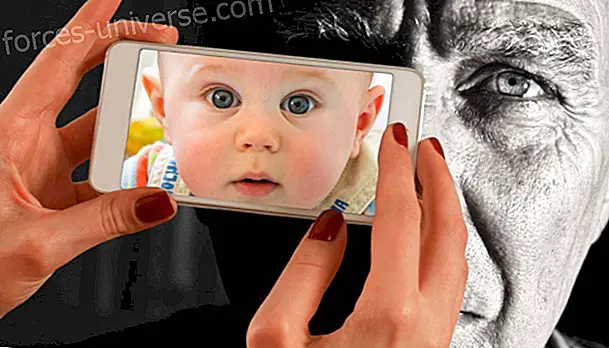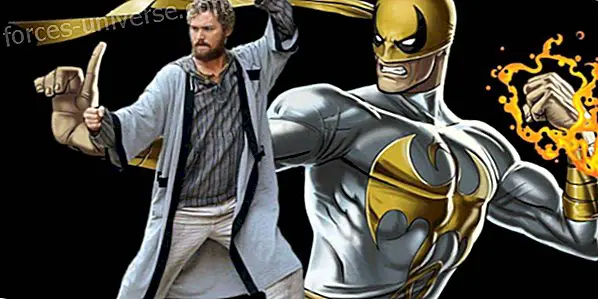INNOVATION COURSE Unit 2. Technologies. Learning Object 3: Therapeutics
Hellenized Jews interpreted the Hebrew writings in such an allegorical way that they found no difficulty in conforming Hebrew theology with Aristotle's philosophy, which they revered. But all this led to disastrous confusion until these problems were treated by Philo of Alexandria, who proceeded to harmonize and organize Greek philosophy and Hebrew theology in a compact and fairly coherent system of beliefs and religious practices, typical of therapists. This more recent teaching of Greek philosophy and Hebrew theology combined is the one that prevailed in Palestine when Jesus lived and taught, and the one Paul used as a foundation to build his Christian cult, more advanced and enlightening than the others.
The therapists are part of a Jewish group in the diaspora, whose name comes from the claims of its members to cure themselves of the diseases of the soul and whose example could be used to cure others. Philo of Alexandria speaks of them in his work De contemplative life . Therapeutic techniques and theories have continued the path initiated by philosophy, religions and mysticism. Therapeutics takes up the ideal of unification, instrumentalizing it from a scientific model and referring it to a different scale of values. The therapies were initially classified into two main categories: behavioral and psychodynamic, the first going from the outside to the inside and the second from the inside to the outside. More recently, transpersonal therapies appear reaching the center of the unconscious, the series of spiritualizing processes being complete: transmutation, transformation and transfiguration.
Three times the call arises to all the walkers who are on the Path of Life: "Know yourself" is the first great mandate, and the process to achieve that knowledge is long. Then comes "Know the Self", and when it has been achieved, man not only knows himself but all the selves; The soul of the universe is no longer for him the sealed book of life but the book with the seven torn seals. Then, when man is already an adept, the so-called "Meet the One" arises and the words reverberate in the adept's ears: "Look for what is the responsible Cause, and having known the soul and its expression, look for THAT which the soul reveals. ”
OBJECTIVES
- Establish relationships between science, philosophy and religion, as well as between art and technique.
- Establish differences between soul, mind and personality, as well as spirit and matter.
- Understand mental health from a cognitive model.
RULE TEN
May the group expand the tears of the veils of maya and thus the light can enter. May the Host of the Voice not be heard and let us move on within the Sound. Let us know the meaning of the OM and hear the OM as issued by the One who remains and waits in the very center of the Chamber of the Lord's Council.
INTRODUCTORY ACTIVITY; from gur sy ashramas

Eddie Murphy personifies the G center, a charismatic and strange man who calls himself "G". Eddie has an unusual use of white robes and is perpetually happy and smiling. He seems to realize how worried Ricky is, and he follows them to the recording studio. G enters the set of an infomercial who at that time was selling a chainsaw, and while in the air he makes an unexpected action that producers believe is crazy. However, the number of calls with customers who want to buy something increases. G's infomercials are mostly anecdotes or spontaneous thoughts about life, but customers connect with him and even slower moving items start selling. While staying at Ricky's house, he enters a party of businessmen and shows his talent by making a Rolex watch “disappear” and cure another man of his fear of flying. Holy Man is a 1998 American movie.
Jamie, a 23-year-old boy receives a cryptic message that makes him travel to the Indian Himalayas to follow the trail of his lost girlfriend. There he meets a secret community led by a guru who possesses strange powers. Although he is a skeptic, Jamie thinks it may be related to the disappearance, and investigating finds out more things than he thought. Thus he discovers that the mysterious mountain hides the secret of reincarnation and a portal to another dimension. The Ashram is a 2017 movie.
- After watching the movies The Guru and The Ashram answer the following questions. How to close the gap between materialism and spiritualism? What is the importance of meditation? How relevant is the number 23? What is the difference between the G-spot of the sacral center and the G-center like the cardiac?
An Ashrama is the center in which the Master gathers the disciples and aspirants for personal instruction. The Guru is the spiritual Instructor, a Master in the doctrines of metaphysics and ethics. The entry of a member of the human family into the ranks of the apprentices and their participation in the activity of one of the ashramas, results in the transfer of a Master from the Hierarchy to the highest center of all, occurring only after the apprentice has received the third graduation, being able, therefore, to play his part in the hierarchical life, as a spiritual expression capable of being impressed from Shamballa. When a Master emerges in this way, he is immediately faced with the choice of one of the seven paths. The seven paths address the purpose, as well as the seven ashramas, of the Plan. As we will see, there is a direct relationship between the seven paths and the seven ashramas. We have, consequently, curiously interrelated: the seven paths, the seven rays, the seven ashramas and the seven races.
ACTIVITY ONE: behavioral therapies.

Philosophy no longer retains an original and at the same time irreplaceable place as a reflection on the knowledge and powers available to man, given that technology has taken its place. But philosophy still has the function of reflecting on moral conscience and virtue. The official philosophy taught in schools was based on Aristotle's logic, hence the word "scholastic", but the hidden depths of man's consciousness were better understood by mystical philosophers whose thinking was intimately connected with parallel systems of hermetic philosophy: alchemy, cabal and philosophy.
Behavioral therapies include a wide range of behavioral disorders and techniques to overcome them. Among the disorders treated were anxiety, phobias, sexual problems, obsessive behaviors, amnesia, and hysteria. While the neurological theories that Wolpe used today are surpassed, the technology developed is still among the most used and effective behavior therapy. The basic idea was that the anxiety response could be rivaled and inhibited by a new antagonistic response. The commonly used antagonistic response is relaxation, and the patient having learned the relaxation technique, the angiogenic stimulus is presented gradually, so that the patient learns to relax before the stimulus that causes anxiety or feared situation. This method is known today as systematic desensitization.
The behavior has been understood as those five instincts that the human being shares with the animal. But while in the animal these instincts set the standard to adapt to the environment, the human being, completely impotent and parasitic, has to make a long learning of his behaviors, learning that is carried out in human relationships with others who They condition their behavior.
The lesson is the teaching that teachers give to their disciples and for that reason it is more moral and indoctrinating. "Reading" is what etymologically means lesson, but when a person does not read by himself, he must be subject to what his teacher demands to achieve discipline. The "docere" lexeme comes from "acceptance" or "thought" and can be seen in dogma, orthodox, paradox, decent, dignified and derivatives; inquire, disciple and discipline, synecdoche, etc.
Transmutation is the tendency of energy to go upwards: from the sacral center to the laryngeal center, from the solar to the cardiac plexus, from the basic to the coronary, from any of the five centers to the ajna center.
- How have the concepts of behavior and discipline been assimilated in character formation?
ACTIVITY TWO: psychodynamic therapies.

Science has been characterized by its causal reasoning and the causality of all psychic phenomena was reduced to the order of the corporeal. Behaviorism and psychoanalysis share this epistemological assumption. In his search for scientific affirmation, psychology fell into different kinds of reductionisms and determinisms, both physical, biological and sociological, and when he tried to overcome them, he made psychology with the different problems related to the spiritual realm of the psyche.
Psychodynamic therapies focus on the exploration and objectification of the inner world of which the subject has no knowledge, considering the inadvertent or unconscious behavior as an essential component of it, precisely because it is considered the unconscious which gives meaning and support to manifest behavior.
The adjective "dynamic" tries to explain three aspects: the genetic, the social and the cultural. On the one hand, the genetic conception of personality. The interaction of the individual with the environment and their attempt to adapt, is forming in the child, different evolutionary stages with their own characteristics. On the other hand, the "dynamic" of confrontation, relationship and shock, between the instances of the structure of the psychic apparatus, determines, together with the need for balance between these components, the behavior of the subject. The conditioning of psychic activity is determined by the quality of the response mechanism.
The third aspect is the "deep" character of psychodynamic theory. The basic and central concept of this "depth" is the unconscious, it is what is not recognized by the person but influences and in some cases determines the behavior. The unconscious cannot be seen with mortal eyes, it is something hidden, it is something that will have to be known from signs, from symbols. Freud establishes a code of "signs" and "symbols" to recognize some aspects of the unconscious. In some cases, the unconscious becomes the last, final, and determinant explanation of behavior. The final truth
The instruction is the set of orders that are given to the disciple to execute an action. Instructional design is the practice of creating "instructional experiences that make the acquisition of knowledge and skills more efficient, effective and attractive."
Transformation is the tendency of energy to go down. The energization of the creative life saw the largeness center, the energization of the conscious life saw the heart center, the energization of the whole human being See the basic center.
- How is the process of becoming a person and what is the difference between person and individual?
ACTIVITY THREE: transpersonal therapies.

Religion and spirituality can influence both the mental health of individuals positively and negatively. Existential beliefs, such as faith in God or another natural order of the Universe, are general beliefs that help people retain hope and seek the meaning of life, despite their painful experiences. Values and virtues intermingle with religious beliefs, forming a highly complex second order assessment scheme.
Transpersonal therapies arise as "fourth force" after humanistic psychology, which studies personal development and human potential. It constitutes a different understanding of psychism, health, disease and personal and spiritual development.
The term transpersonal means “beyond” or “through” the personal, and refers to the experiences, processes and events that transcend the usual sense of identity, allowing you to experience a greater and more meaningful reality. they consider the highest potential of humanity and the recognition, understanding and updating of the modified states of consciousness, unitive, spiritual and transcendent.
Archetypal psychology uses two words that are closely related to the difficult law of karma; the canons and conditioning indicate two basic ideas with which trained learners work. The canons are those types of energy that struggle to emerge into material expression and that eventually subordinate the obvious and more superficial energies. The canons are literally divine ideas, because they arise from subjective group consciousness and adopt those mental forms that can be appreciated and appropriated by the mind and brain of man during a certain time. The conditioning concerns the innate and inherent response of the mental substance to that canon.
Prayer, even as a purely human practice, a dialogue with the other self itself, constitutes a technique of the most efficient approach to the realization of those reserve powers of human nature that are stored and preserved in the unconscious domains of the human mind. Prayer is a healthy psychological practice, apart from its religious implications and spiritual significance. It is a fact of human existence that most people, if circumstances press hard enough, pray in some way to some source of help.
Transfiguration occurs when the human being uses the basic, ajna and coronary centers consciously and simultaneously, in rhythmic and coordinated expression. In the transfiguration the idea of the person is observed, the "traces" of the experiences, that light that, with life, returns on itself: The Flower of the Self.
- What are those archetypal ideas that shape the seven forces of the soul?
BETWEEN ISIS AND MAYA

Egypt was fashionable in the final years of the Enlightenment; and Schiller had already dedicated a poem to The Veiled Image of Saïs . In Schiller's formulation it is a young disciple of the temple of Isis whose desire was to know the truth, contemplate it, and enjoy in that contemplation the possession of all things. The truth, says his teacher, is in the face of the goddess, whose image is covered by a veil that no mortal with guilt can lift without dying. The story ends badly: the young man could not restrain his passion, and he was found dead one morning before the veiled image. The goddess keeps the key to all things; and that means, at the end of the Enlightenment, the mystery of nature understood as truth. In its Novalisian formulation, the goddess's veil is the poetic symbol of nature itself, like an encrypted language whose strokes, which are its sheets, we are unable to read. Lifting the veil means interpreting that language. For its part, Schopenhauer dedicates a book to El veil de maya.
Maya is in Hindu mythology the physical illusion, an illusory or unreal image. In Greek mythology she is the oldest of the Pleiades and mother of Hermes, intelligence. The rule begins by stating that all apprentices already know and apply the rules to work within the veils of maya. Maya is the factor that conditions the etheric levels, and the disciple in probation must avoid and overcome when he "escapes" from the slavery of the physical plane. Thus he learns to tread the path of discipleship. These characteristics are, however, the reaction of humanity to the activities of the devotional evolution, which continues the task of complementing the divine will divinely and correctly. When the sphere of their activity comes into contact with human intelligence, the effect on humanity is to encourage man (before managing to dominate them) to “wander through the fields of maya, to drown in the sea of mirage and to respond to the call of the illusion".
God is mind God is intelligent acting. God is creative activity. These are the qualities of devic evolution. God is love, God is relationship, God is conscience, they are the three qualities of Christic evolution, evolution that takes place within the created sphere of influence of the third aspect. God is life, God is fire, God is pure being, they are the qualities of the spirit aspect, omnipotent aspect of Deity. The three aspects are focused and expressed in the levels of the etheric cosmic planes and in the levels of the etheric planes that humanity knows in the three worlds.
The force used must flow through the rainbow and, according to the nature of the work to be done, this will be the particular thread or thread of the rainbow that the apprentice will use. These are the four veils of maya, necessarily constructed of seven forces, that produce the real and phenomenal aspect (in time and space) of the Great Illusion in its three forms: illusion, mirage and maya. There are seven energy points through which the different aspects of the force necessary to produce the desired effects within the veils of maya, corresponding to the seven types or qualities of lightning, flow. But the main type of energy with which the apprentice works on the physical plane is the seventh, the ray or energy of ritual, ceremonial, order and law.
- How have we managed to differentiate the four veils of matter from the seven forces of the soul?
THE WEAVER IN THE LIGHT
Being a weaver of light implies synthesizing internal life with external life through a transpersonal approach. Vertically it constitutes the technique of Presence, horizontally it constitutes the technique of service. The name of the Lightworkers derives from horizontal work after having torn the four veils of maya. To achieve this, it uses three techniques prior to the fusion
1. The Presence Technique . Through this technique, the soul assumes control of the integrated personality and its relationships, horizontal and vertical. This technique implies the opening of the flower of intuition that dissipates the illusion, reveals the Angel, indicates the Presence and opens the world of ideas and the door of higher graduations to the disciple. When the disciple captures and applies these divine ideas or seed thoughts, he becomes an apprentice, then the third graduation is possible as an immediate goal. Intuition means the application of the power of transfiguration. This technique is related to the little known fire yoga or Agni Yoga.
2. The Technique of Light . Through this technique, the enlightened mind assumes control of the emotional body, and dissipates the mirage. When the light flows, the mirage disappears. Illumination dominates and the vision of reality can be seen. This technique is related to Raja Yoga and its goal is the second graduation, qualifies to trample the Path of Discipleship and allows man to "live a life illuminated by divinity." Illumination means the application of the power of transformation.
3. The Indifference Technique . Through this technique, Maya is put to an end, since the control of the purified emotional vehicle is consciously and technically put into activity, releasing the energies of the etheric body, from the control of the substance, and leads many beings to the Trial Period. Where there is "divine indifference" to the attraction of matter, then inspiration becomes possible. This technique is related to Karma Yoga. The goal of this technique is to achieve the first graduation, which allows man to "live a life inspired by God." Inspiration means the application of the power of transmission.
The aspirant must always work from the outside in and strive to direct his life from top to bottom, if he wants to dominate these forces and not be controlled by them. Instead, the apprentice works "from within the circle", that is, the field or circle of maya. Therefore he must develop his activity from the very core of the mystery that these forces contain, and he can do it because he is in a position where he knows with what kind of energies he must have, he understands the nature of the forces with which he can and must manipulate the nerg energies of maya and thus dominate the ethereal plane; He is also aware of where one veil ends and another begins, and from that level he can, with all success, adapt the swirling and living energies to the divine canon.
It should also be noted that the apprentice projects the energies to the world of maya, directs them from several existing centers in his body and from the central energy point corresponding to each center used. The apprentice acts from the central jewel in the lotus, and these seven focal centers, the so-called seven jewels, are the analogy of the jewel in the egoic lotus. Therefore, this means that the successful work within the veils of maya always involves the use of the will aspect and the consequent use of that portion of shamblic force that the apprentice is capable of appropriate and use, because he has already begun to act as the focus agent for the spiritual Triad, and does not act as soul or soul-controlled personality.
Students should not name or differentiate the four veils, which themselves are transient and variable. They differ when they receive the impact of the seven rays. At present its destruction (previously it was not so) must occur from the dense physical plane and the attack must be carried out by personalities and individuals in physical bodies. In a way it is a new approach, because so far very few disciples and apprentices have been able to work in this way.
Mention three large tears produced in the veils. The Bible refers to them in symbolic form, although their essential meaning has not been observed or understood. The first was produced by the establishment of the Law of God, which the Old Testament describes symbolically in the episode of Moses, when he ascended to the Mount of God, and there he received the Ten Commandments ; expression of the divine law adapted to humanity and necessary to project the forces that destroy, purify and reorganize. The second and very important tear was produced by the power of the second aspect, when Christ submitted Master Jesus to the fourth graduation, and his joint influence triumphed over death, in crucifixion. We read that the veil of the Temple was torn from top to bottom. Another tear of the veil, relatively minor, took place when Salas of Tarsus contemplated the glory of the Lord and was transformed into Paul, the Apostle. His push and powerful righteousness and sincerity, his haste on the "road to Damascus", impelled him to go through one of the separating veils. The Kingdom of Heaven "suffered violence", and the violent take it by force. This force, acting on Sael, impelled him through the veil that prevented the visual, and the tear produced brought him a new revelation.
There is still a fourth large tear resulting from the energies released and the good acquired, which enabled the previous three tears. This fourth tear has been carried out by humanity itself, with "mass intention" focused through the groups that constitute the ashramas of the Masters. Therefore, the tearing has been produced by the exteriorization of the Hierarchy on earth. The last atrium is that of money changers and is related to encryption.
REFERENCES
Alice Bailey Mirage, a worldwide problem.
Arthur Schopenhauer The world as will and representation.
Carl Jung The secret of the golden flower.
Carl Rogers The process of becoming a person.
Michel Foucault Hermeneutics of the subject.
Walter Riso . Cognitive therapy






